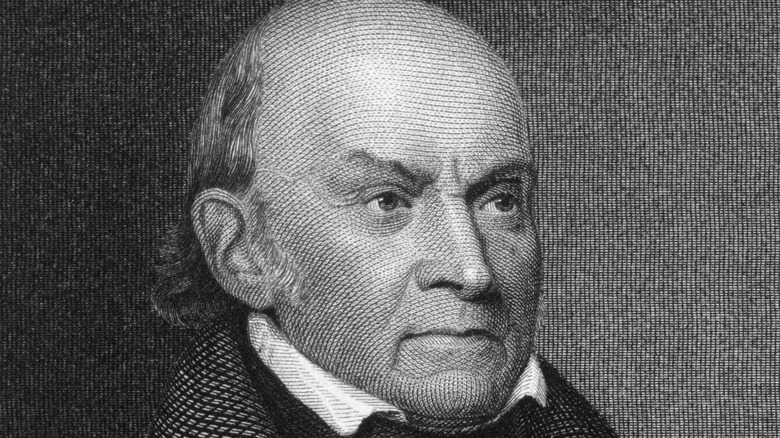Why Florida Would Have Never Been A State Without John Quincy Adams
Anyone who has enjoyed the warm, beautiful beaches of Florida owes thanks to John Quincy Adams. Before he was president, Adams made the deal of a lifetime as secretary of state. He served in the post under President James Monroe and proved to be a talented negotiator. His talks with Spain changed the geography of the United States.
Spain's connection to Florida dated back to 1565 when the country began colonization efforts there, according to History. While Spain maintained a presence, the lands changed hands over the years. The area was under French and British rule for a time. Around 1783, Spain regained control of Florida as part of the second Treaty of Paris. Spain and the United States became involved in numerous conflicts over where one country's territory ended and the other's lands began.
Adams became secretary of state in 1817, and he came to the job with a lot of diplomatic experience. He had lived abroad, spending time in France, England, Russia, and the Netherlands (via the National Museum of American Diplomacy). From 1794 to 1811, Adams held several diplomatic posts, representing American interest in such countries as Germany and Russia. He also served as one of the peace commissioners who worked on ending the War of 1812, which was concluded with the Treaty of Ghent.
Adams' deal with Spain for Florida
Tensions over Florida had been building as more and more Americans moved to West Florida after the American Revolution, and the negotiations between the two countries over Florida took years. In fact, James Monroe was secretary of state when talks began in 1815 (via the Office of the Historian). In 1818, the whole situation reached a crisis point when General Andrew Jackson took over the Spanish forts in Pensacola and St. Marks. Jackson had done this as part of his raid on Seminoles and runaway slaves. He thought these people posed a problem to nearby Georgia.
John Quincy Adams met with Luis de Onís, a diplomat who represented the Spanish government. Together they worked out what became known as the Adams Onís Treaty, which was signed on February 22, 1819 (via Texas Historical Society Handbook). In this agreement, Spain gave up Florida and the United States let go of its claim to Texas (for the time being at least). Through this treaty, also known as the Transcontinental Treaty, the United States got Florida for free. Per History, all the United States had to do was cover the $5 million in damages caused by Americans who opposed Spanish rule.

